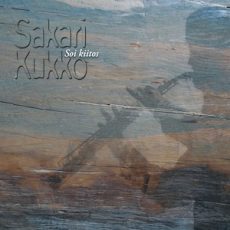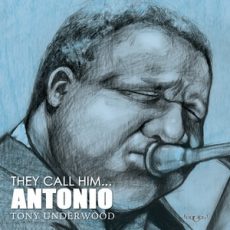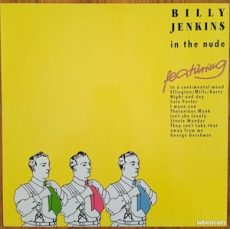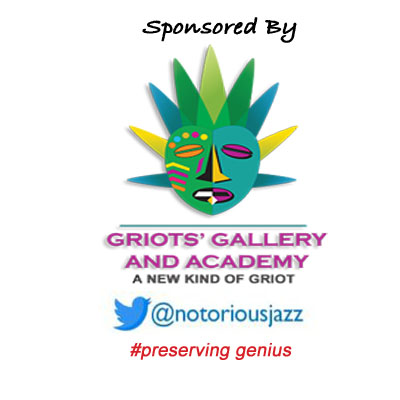
Daily Dose Of Jazz…
Jyrki Sakari Kukko was born July 8, 1953 in Kajaani, Finlan and started his career in the early 1960s as a singer participating in several singing contests and performing in radio stations, TV programs and other venues. At the age of 7, he began taking piano lessons and soon after started playing guitar and flute, then saxophone. The mid-1960s saw him forming bands, constructing a school band, playing mainly rock and roll, before forming a group of local dance bands.
He embarked his career at sixteen playing with the Kajaani Big Band, Kisu & Uniset, Markku Suominen’s Monopol, Tapiola Big Band, Oulunkylä Big Band, Maarit & Afrikan Tähti, Kalevala, SIMO Big Band, Jukka Tolonen’s band, Heikki Sarmanto’s band, Sensation Band of Addis Ababa, Mahmoud Ahmed’s Ibex Band, Etoile de Dakar, and Espoo Big Band through the Seventies. He founded the group Piirpauke in 1974.
He has performed with Youssou Ndour, John McLaughlin, Pat Metheny, Bob Mose, Lester Bowie, Charlie Mariano, Thad Jones, Paquito d’Rivera, Ted Curson, Walter Bishop Jr., Herbie Hanckock’s HeadHunters, Richie Cole, Juan Carlos Romero, and numerous Finnish musicians.
Working as a studio-musician Kukko performed as a freelancer with the Helsinki Philharmonic Orchestra, Finnish Radio Symphony Orchestra, and the Finnish National Opera. He has composed music for his own bands, EBB, Koiton Laulu and several films and theaters.
Pianist, flutist, guitarist, saxophonist, vocalist and composer Sakari Kukko continues to perform with over forty countries around the globe.
More Posts: bandleader,composer,flute,guitar,history,instrumental,jazz,music,piano,saxophone,vocal

Daily Dose Of Jazz…
Antonio Underwood was born on July 7, 1960 in Charlottesville, Virginia. He matriculated through the Yale School of Music as a Classical Tuba Major, where he was awarded several honors. Graduating in 1987 he has since been a member of the two-time Grammy Award winning McCoy Tyner Big Band.
He began his career playing in NYC clubs at the age of nineteen and has performed alongside Max Roach, Jerry Gonzalez, Julius Preister, Delfeayo Marsalis, Bob Belden, Christian McBride, Cecil Taylor, Cecil Bridgewater, Vincent Herring, Joshua Redman, Javon Jackson, Lester Bowie, John Faddis, Charlie Haden, Eddie Henderson, Billy Harper, and the list goes on.
He has been a cast member of Broadway musicals Juan Darien, Jelly’s Last Jam, One Mo’ Time and Further Mo. Tony’s composition and orchestration credits include recordings by Be Be Winans, Terry Dexter, John Purcell, The World Saxophone Quartet, Anthony Montgomery, among others. Owner of his own published material (380), brass quartets published by TAP Music (Iowa), and Jazz compositions published by ENJA Music, Germany.
Underwood has scored films Rumbling of the Earth and Shadows of the Dead. He has produced tracks for Lisa Fischer, Katreese Barnes, Steve Jordan, and Anthony Jackson. He is the first Black person to be a George Lucas scholar to the Scoring for Motion Pictures and Television program at USC and is a Fulbright Scholar Lecturer in Serbia.
Tubist, composer and lecturer Tony Underwood continues to perform, compose and lecture.
More Posts: bandleader,composer,history,instrumental,jazz,lecturer,music,tuba

Daily Dose Of Jazz…
Charles William Jenkins was born July 5, 1956 in Bromley, Kent, England and was known to the jazz and blues worlds as Billy. He began learning the violin from the age of nine and two years later added piano and choir. By twelve he taught himself to play the guitar.
As a young teenager, Billy started regular jam sessions in the basement of the bohemian twenty-three room former hotel where he grew up. This jam session attracted many local contemporaries, his best friend at the time, Bill Broad, who the world came to know as Billy Idol and Steven Bailey, later to become Steven Severin.
During those teen years he performed in local church halls, USAF Bases in East Anglia, riverside pubs, local colleges and clubs under various names 1970-72. Jenkins toured and recorded for Arista Record’s Clive Davis with art rock band Burlesque from 1972-77, performed as a young adult with ‘alternative musical comedy’ duo The Fantastic Trimmer & Jenkins from 1979-82 and drummer Ginger Baker before founding the VOGC, the Voice of God Collective.
From 1983 – 93 he lived and worked at Wood Wharf Rehearsal Studios in Greenwich, England. Since then Billy has produced a large body of over 40 recorded albums including Scratches of Spain, Motorway At Night, Entertainment USA and Music For Two Cassette Machines. Some of his recordings are about his SE London environs and include Sounds Like Bromley, Greenwich, Still Sounds Like Bromley and Suburbia.
Guitarist, composer and bandleader Billy Jenkins, who is immersed in improvisation as ell as standards, continues to pursue his love of jazz and blues.
More Posts: bandleader,composer,guitar,history,instrumental,jazz,music

Daily Dose Of Jazz…
Maria Speight was born in Savannah, Georgia on July 4, 1958 and got a head start in the world of jazz, as her birthplace is the home of kindred brother, lyricist Johnny Mercer. The oldest of five siblings, her mother thrust her onstage at her local church when she was six. From that moment on she was hooked.
Her dad was exposed to everything from opera to jazz and her mother taught Maria about Gospel music, and was exposed to so many influences of music, and have found they are part of her style. In college she studied operatic voice for four years, however, after her last recital she realized opera wasn’t for her. It was at this point six years later that she found jazz.
Touring professionally fourteen years with a gospel band and paid her dues for her life in jazz. Her style is in the vein of Ella Fitzgerald, Sarah Vaughan and Peggy Lee and the standards she performs endure.
Now based in Perth, Scotland she is new on the jazz scene. She weaves rich colours and textures into every swinging note with the Maria Speight Quintet.
More Posts: bandleader,history,instrumental,jazz,music,vocal

Daily Dose Of Jazz…
Bruce Adams was born on July 3, 1951 in Glasgow, Scotland and was brought up in a musical family. His father Bob was a guitarist whose career extended back to the British dance bands of the 1930s and his mother was a dancer. His first real musical interest was the music of Django Reinhardt and Stephane Grappelli at the age of seven. His first instrument was the guitar but switched to trumpet on his eleventh birthday. Within five months he played his first gig on trumpet.
By twelve, Bruce was working three to four nights a week in the Glasgow area playing in small dance band residencies and performing in a cabaret act with his father. When he was fourteen he was sponsored on Hughie Green’s Opportunity Knocks by British trumpet legend Nat Gonella. The following year he left school and went on the road with his father playing theatres. They continued until 1973 when his father’s health led to disbanding the act.
From 1973 onwards Adams immersed himself in the Glasgow jazz scene by forming a jazz quintet with alto saxophonist Bill Fanning. Together they formed a big band. During this period he also played the Mecca Ballrooms, with Benny Daniels in the Plaza and Bill Patrick in Tiffany’s.
In the mid-eighties, Bruce worked with Harry Sweets Edison, Warren Vache, and Spanky Davis. Buddy Tate, Al Cohn, Benny Waters, Danny Moss, Bruce Turner, John Barnes, Bob Wilbur. Dan Barrett, Roy Williams, George Chisholm, Bill Allred. Dave McKenna, Ray Bryant, Dick Hyman, Art Hodes, Johnny Parker, and Stan Greig.Milt Hinton, Ronnie Rae, Len Skeat, and Dave Green. Jake Hanna and Gus Johnson.
Adams played with Pete Long’s Echoes of Ellington, the BBC Big Band, and freelanced with Lennie Niehaus, Gerald Wilson, Patti Austin, and the Cuban Fire Concert with Horatio el Negra Hernandez and Giovanni Hidalgo.
He is a multiple British Jazz Awards Winner, with among his more than twenty nominations has received awards for Best Trumpet, Oustanding Soloist, and Trumpet Soloist. Trumpeter Bruce Adams continues to ply his trade encompassing jazz styles ranging from Louis Armstrong to the modern-day.
More Posts: bandleader,history,instrumental,jazz,music,trumpet


